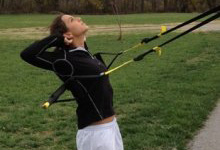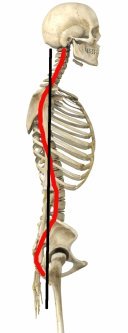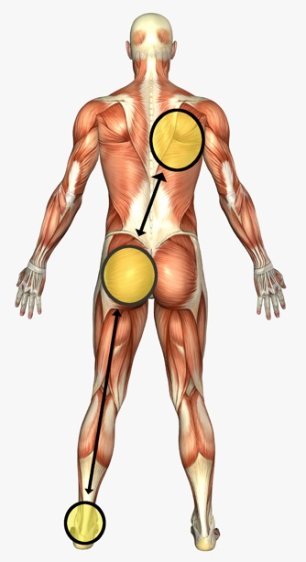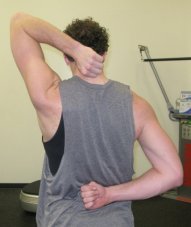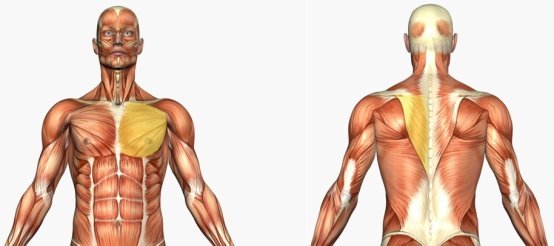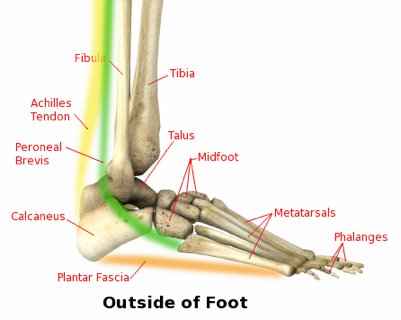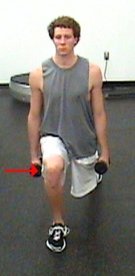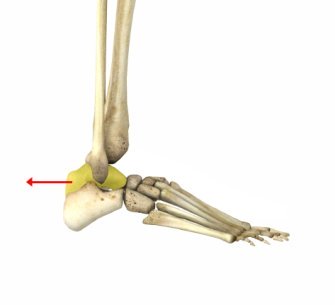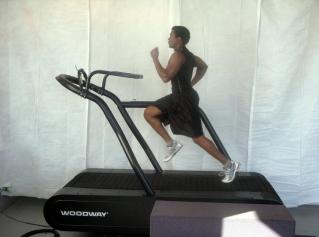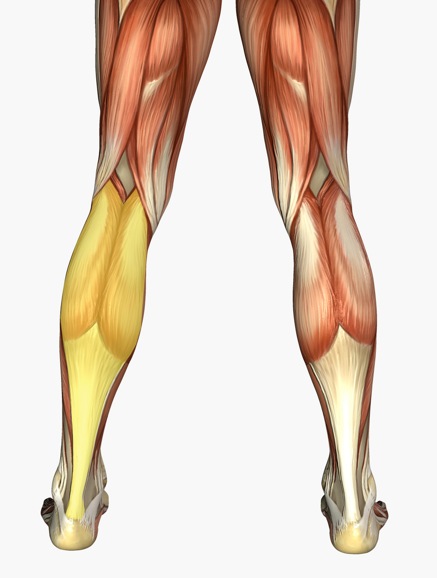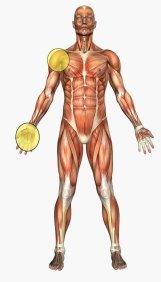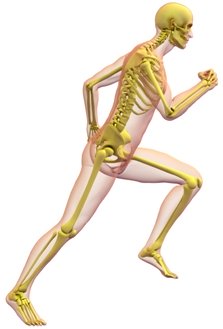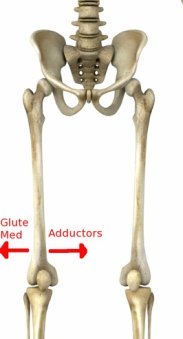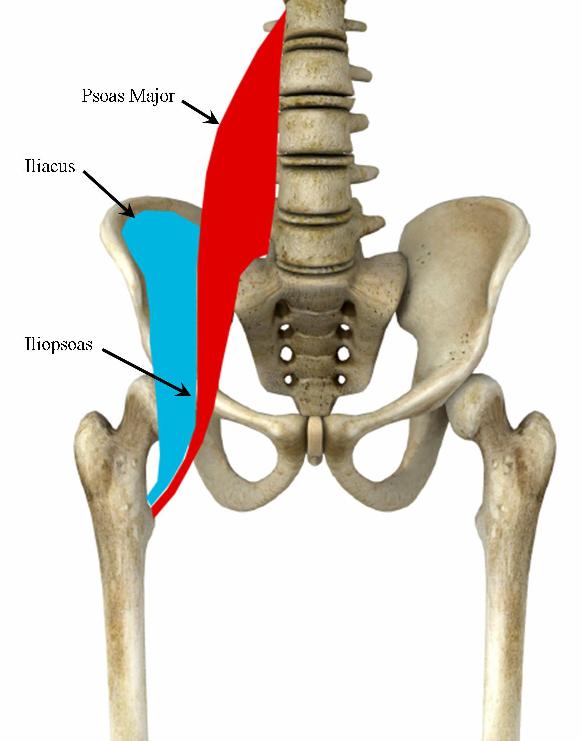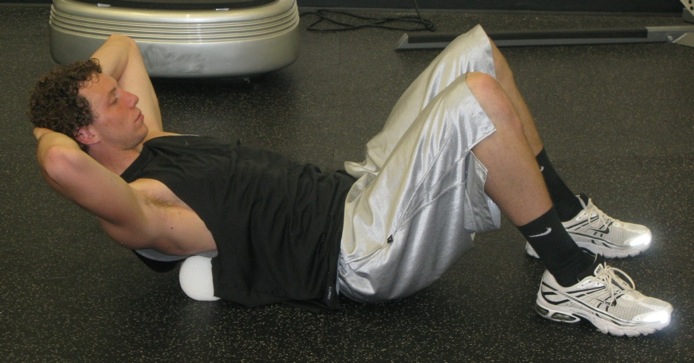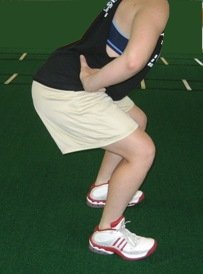Thoracic Spine Mobility: So, what are the best ways to improve Thoracic Spine Extension? There are a variety of ways. If you have the manual skills, there are manual mobilizations. If you have access to a good Chiropractor, they can make some dramatic improvements with some good manipulations. At MTS, we prefer to combine therapeutic […]
Spinal Health
Thoracic Spine Mobility: As Newton said many, many years ago “for every action, there is an opposite and equal reaction.” This is a basic principle of physics and applies to the human spine. So, when one part of the spine develops an unnatural curve, the rest of the spine will be affected. Balancing Act To […]
Sport Specific Movements
Thoracic Spine Mobility: The easiest way to explain the impact the Thoracic Spine has on sporting movements is to go watch a friendly golf outing between 2 gentlemen. One friend is the taller, thinner athlete, who doesn’t appear to be all that athletic, but has a smooth, “sweet” swing that appears effortless. His friend […]
Shoulder Injuries
Ankle Dorsiflexion: So, many people will think you are crazy if you tell them that you are going to fix their shoulder injury simply by fixing their poor ankle dorsiflexion. And, to a certain degree they’re right. We cannot say that a shoulder injury is completely due to a lack of dorsiflexion. We also can’t […]
Shoulder Performance
Thoracic Spine Mobility: When we talk about the performance capabilities of the shoulder, we are mostly talking about overhead athletes. This includes things like throwing a football, throwing a baseball, swimming, an overhead dumbbell press, or anything else that requires an athlete to take their had above their head. Obviously, in just about all sports, […]
Shoulder Joint Pain
Thoracic Spine Mobility: What does the Thoracic Spine have to do with the Shoulder joint? In one word… EVERYTHING!! As we discuss on a regular basis at MTS, everything is connected. So, to cut to the chase, is goes like this… The humerus sits in the glenoid and is stabilized in the glenohumeral joint by […]
References
1. Baechle, T.R. Essentials of Strength and Conditioning. Champaign, IL: Human Kinetics, 1994. 2. Chu, D.A., Jumping Into Plyometrics. Champaign, IL: Leisure Press, 1992. 3. Chu, D.A., Korchemny, R., Sprinting Stride Actions: Analysis and Evaluation. NSCA Journal. 11(6). 1989. 4. Coaches Roundtable. Speed Development. NSCA Journal. 12-73. Jan 1984. 5. Corn, R.J., Knudson D. Effect […]
Peroneals-Posterior Tibialis Interaction
Imagine a classic tug of war… As one team pulls hard on the rope, the other team gives a little and stretches out their arms as the flag in the middle moves closer to the team which is pulling harder. Then, the team with outstretched arms regains their composure and pulls the flag back towards […]
Pec-Scapular Stabilizer Interaction
The old adage usually holds true that “every action has a an opposite and equal reaction.” With the human body, that usually means that if there is a restriction somewhere, there will be an issue somewhere else. As it pertains to the shoulder, a restriction in the Pecs (especially Pec Minor) will cause a poor […]
Overhead Movements
Thoracic Spine Mobility: Oftentimes athletes will use overhead pressing movements to improve shoulder strength. We also see a lot of coaches using the Overhead Squat Movements for a variety of reasons. Both are great exercises, when the athlete has the appropriate amount of Thoracic Spine Extension. Unfortunately, if the Thoracic Spine is locked up and […]
Plantar Fascia
Ankle Dorsiflexion: The Plantar Fascia is a thick layer of connective tissue that lines the bottom side of the foot. It’s primary role is to support the arch of the foot and give the foot structure. To review our anatomy, the Plantar Fascia originates on the base of the calcaneus (heel) and inserts on the […]
Proximal Tibiofibular Joint
Lateral Knee Pain: Many people will read this and wonder why this joint is so important? We never learned in anatomy or kinesiology that this joint was imporant because it has no real action or movement. WHEN IT COMES TO LATERAL KNEE PAIN, THIS JOINT USUALLY MEANS EVERYTHING! We discussed why typical treatment methods […]
Leg Lunges
Ankle Dorsiflexion: As we have discussed, there is a ripple effect up the entire kinetic chain. A dorsiflexion restriction is very evident in lunging patterns. A lunge is essentially a similar movement pattern as a squat, but it places a much larger load on the lead leg, due it’s single leg stance position. It necessitates […]
Joint Mobs
Ankle Dorsiflexion: If you are a sports medicine professional and looking for the best way to increase mobility and range of motion, joint mobs should be your technique of choice. Possessing good manual skills are part of what makes a good athletic trainer or physical therapist. Joint mobs are extremely beneficial, but also difficult to […]
Improved Sprint Mechanics
Everyone performing any kind of motor learning with an individual can attest that utilizing a very controlled environment is the easiest means to achieve desired results.The treadmill makes motion analysis very simple because of the controlled environment that the athlete is placed in. In most cases, it eliminates the need for video analysis because the […]
Muscle Interactions
One of the more difficult, but important keys to understanding the human body and it’s various functions, is understanding that all muscles interact with eachother. As we discussed in the Muscle Function section, all muscles serve a number of different roles. We have to keep in mind that each muscle in the body has an […]
Muscle Function
So, we talk about functional anatomy, but what is the “Functional” part, and why is is so important. Here at MTS, we are the first to acknowledge that the term “Functional” has become a huge buzz word in the fitness and sports training world and is so over the top, that we now have a […]
Grip Strength-Rotator Cuff Interaction
As a clinician, you may have been taught to evaluate grip strength following a shoulder injury. If you are a coach or athlete, you may have seen an at hletic trainer or physician do the same, and wonder ‘what does grip strength have to do with a shoulder injury?’ The truth is, A LOT. The […]
Hip Flexor – Hamstring Interaction
From an injury treatment perspective, the tradtional approach to treating hamstring injuries has been to decrease inflammation in the muscle, stretch the hamstrings, and to work on strengthening them. The problem with that method is, if you aren’t addressing issues with the hip flexors, you are missing the boat and the athlete will never fully […]
Hamstring-ACL Interaction
The Hamstrings and Anterior Cruciate Ligament (ACL) are extensively intertwined and very dependent upon each other, when the body is functioning correctly. Research has demonstrated that athletes who are quad dominant are at much higher risk for an ACL rupture. This leads us to training the hamstrings to unload the ACL and protect it from […]
Glute-Hamstring Interaction
The Glutes are likely the most explosive muscle in the lower body. Unfortunately, they are also the one of the most underused. An inactive and underused Gluteus Maximus muscle means that an athlete is unable to push their hip into full extension. Lack of hip extension means poor speed during sprinting movements and/or hamstring injury. […]
Gluteus Medius-Hip Adductor Interaction
Have you ever been on a teeter totter? When one person is larger than the other, it just doesn’t work very well. One side is always sinking to the ground, while the other person is left hanging. It isn’t nearly as fun as being able to balance each other out and sooner or later, one […]
Functional Anatomy
Understanding anatomy is the first step in understanding function. Why is it so important? The human body is this incredible machine that relies on muscles to perform everything from moving joints to breathing to seeing. Moving joints is how the body moves from point A to point B. The nervous system within our body relies […]
Evaluating Thoracic Spine Mobility
Once we understand the importance of the Thoracic Spine on our athlete’s health, biomechanics, and performance, we have to understand how to evaluate it and then finally, treat it. There are a variety of ways that you can go about evaluating the Thoracic Spine. At MTS, we try hard to keep it simple and straight […]
Functional Leg Length Inequality
Functional Leg Length Inequality (LLI) is very common among athletes. Simply put, it is when one leg is longer than the other due to any number of reasons. The one reason that isn’t included in this category is an Anatomical Leg Length Inequality. Anatomical Leg Length Inequality is when one leg is actually longer than […]
Is Strength Important?
by Mitch Hauschildt, MA, ATC, CSCS I hear a lot that people need to just “get strong”. Or, my patient is “weak” in that area. Or my personal favorite, they just need to work on “core strength.” Whenever I hear these statements from clinicians, it puzzles me a bit. What does it really mean to […]
Dorsiflexion Solutions
Ankle Dorsiflexion: There are a number of techniques which can be used effectively to improve an athlete’s dorsiflexion. It can be as simple as stretching the calves or it may be more complicated and require very involved hands-on manual therapy techniques. Are They Restricted? The first and most important step for treating a dorsiflexion restriction […]
